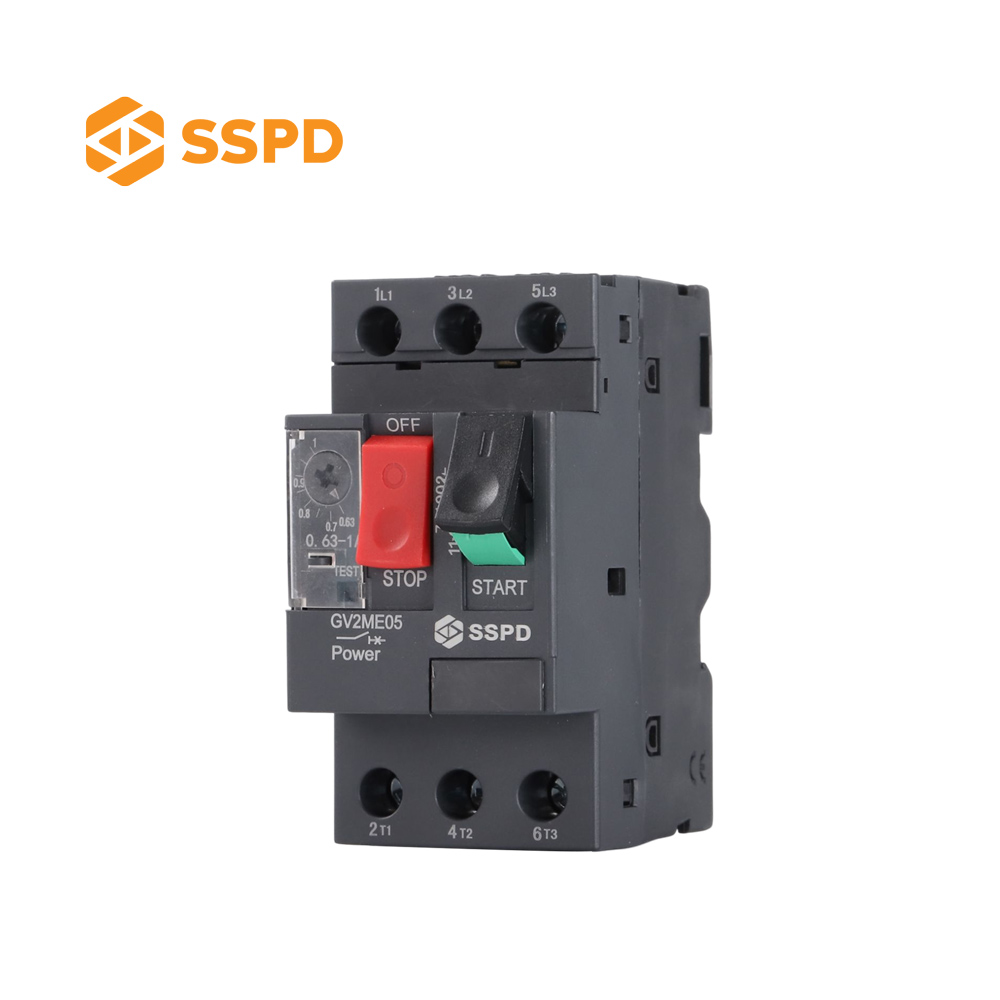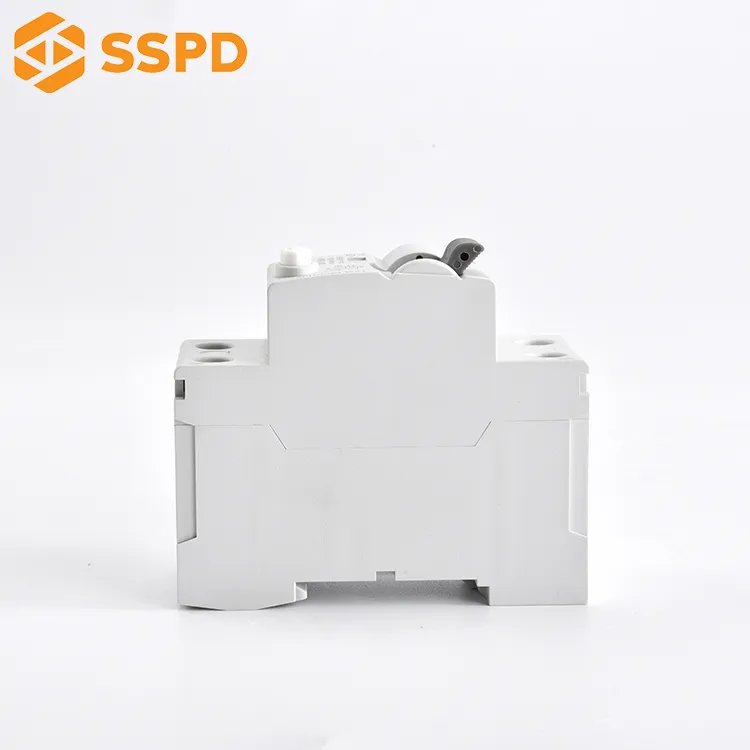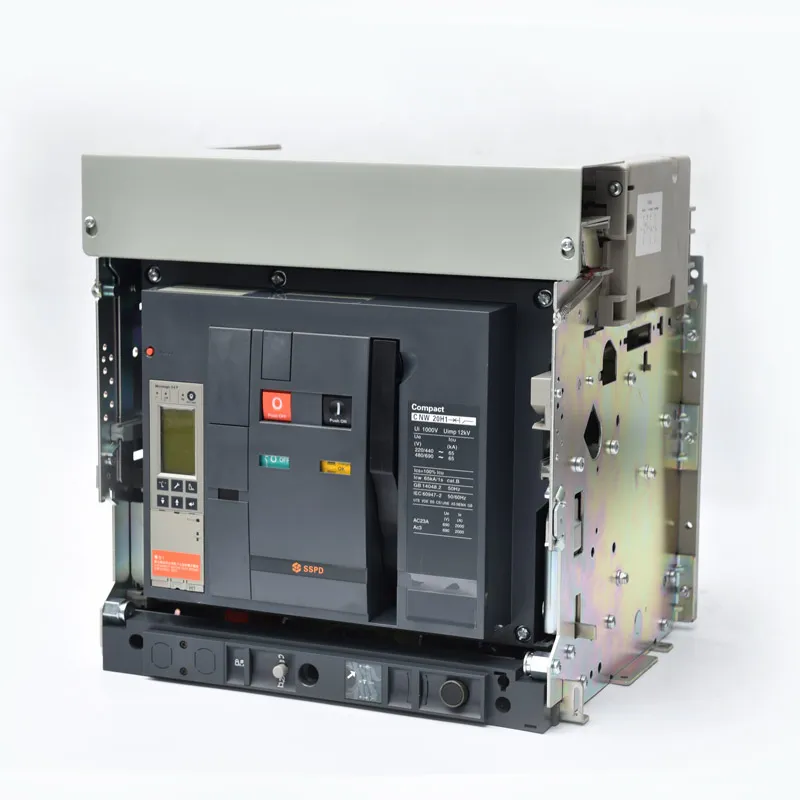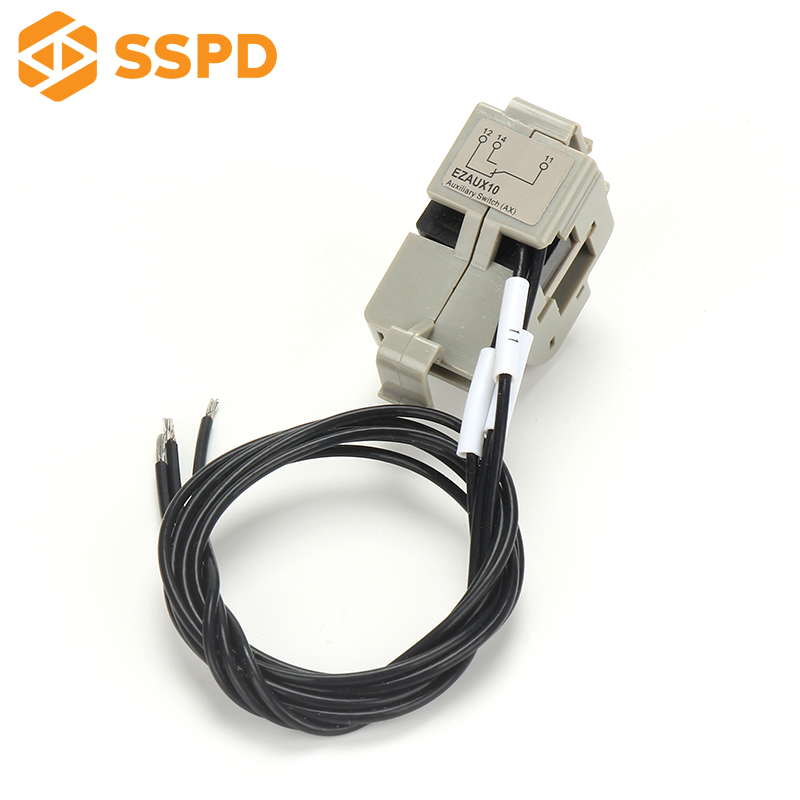Some parts of this article are assisted by AI to improve clarity, structure, and SEO compliance.
Introduction: What Is an AC Contactor and Why Does It Need Protection?
An AC contactor is a switching device used to control high-power circuits, often combined with overload and short-circuit protection to ensure safe motor operation in industrial environments. In modern electrical systems, AC contactors are indispensable devices that control and switch power circuits in industrial, commercial, and residential applications. However, merely enabling switching is not enough — protection against overloads and short circuits is crucial to prevent damage, ensure system reliability, and uphold safety standards.
This article explores the mechanism of overload and short-circuit protection in AC contactors, providing insights into how they work, where they’re used, and how to choose the right components to protect your equipment.
What Is an AC Contactor?

An AC contactor is an electromechanical switching device designed to repeatedly make or break an electrical circuit. Unlike circuit breakers, contactors are not designed to interrupt fault currents but to control normal current flow to motors, capacitors, lighting, or heating loads.
However, when integrated with overload relays and short-circuit protection devices, AC contactors become part of a reliable motor control and protection system.
Part 1: Understanding Motor Overload Protection in AC Contactor Circuits
What is Overload?
An overload occurs when a motor or electrical device draws current above its rated capacity for an extended period. While not immediately destructive, it generates excess heat, which can degrade insulation, shorten lifespan, or even cause fire hazards.
How Overload Protection Works

AC contactors are typically paired with thermal overload relays. These relays contain bimetallic strips that bend when heated by excess current. When a preset temperature is exceeded:
- The bimetal strip activates the tripping mechanism.
- The relay opens the auxiliary contact wired into the contactor’s control circuit.
- The contactor de-energizes, disconnecting power to the motor or device.
This protection mechanism is widely adopted across industrial motor control systems. SSPD’s CJX2-series AC contactors, when paired with compatible thermal overload relays, offer reliable protection with precise trip adjustment and long mechanical life — suitable for a wide range of motor loads.
Adjustable Settings
Many overload relays allow users to:
- Adjust current ratings based on motor FLA (Full Load Amperes).
- Set time delays to prevent nuisance trips during motor start-up.
- Choose manual or automatic reset based on operational requirements.
📌 Fact: According to IEC 60947-4-1, overload relays should trip within 2 hours when carrying 115% of their rated current.
💡 Have you checked if your overload relay matches your motor’s startup behavior? Misalignment could lead to unnecessary downtime or motor overheating.
Part 2: Short-Circuit Protection in AC Contactor Circuits
What is a Short Circuit?
A short circuit is a low-resistance connection between two points of different potential, allowing extremely high current to flow — often thousands of amperes — which can instantly damage components, melt conductors, or cause explosions.
Why AC Contactors Need Help
AC contactors cannot interrupt short-circuit currents. That task is delegated to:
- Miniature Circuit Breakers (MCBs)
- Molded Case Circuit Breakers (MCCBs)
- Fuses
These devices are installed upstream and:
- Detect high current spikes.
- Trip or blow immediately, isolating the faulted circuit.
- Protect the contactor and downstream equipment.
Coordination Is Key
For optimal protection:
- Short-circuit devices must be coordinated with the contactor and overload relay.
- The system should meet Type 2 coordination, where no damage to the contactor occurs and it remains operational post-fault.
Real-World Application: Motor Starter Circuit
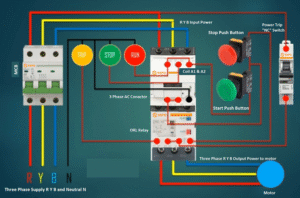
Consider a typical motor starter circuit in a factory:
- The AC contactor controls the motor operation.
- A thermal overload relay provides protection against prolonged overcurrent due to mechanical jam or overload.
- An MCCB/MCB installed upstream protects against high-current faults from cable damage or phase-to-phase short circuits.
This combination ensures full-spectrum protection:
- Thermal for gradual problems,
- Magnetic or electronic for instantaneous high-energy events.
💡 Did you know? Most industrial motors are tripped more by prolonged overcurrent than short-circuits. A properly selected relay makes all the difference.
Selection Guidelines for Protection Mechanisms
When selecting overload and short-circuit protection for AC contactors, consider the following:
| Factor | Recommendation |
|---|---|
| Rated Current | Match the relay to the motor’s FLA. |
| Tripping Class | Choose Class 10, 20, or 30 based on motor start time. |
| System Voltage | Ensure breakers/fuses are rated for system voltage. |
| Coordination Type | Aim for Type 2 coordination for critical applications. |
| Reset Mode | Use manual reset in unattended environments to prevent automatic restarts. |
✅ Looking for a proven protection combination?
Many of our customers use the SSPD CJX2-32 + LRD12 for 7.5kW motors and the CJX2-80 + LRD36 for up to 45kW. All SSPD devices comply with IEC 60947 standards and are tested for high reliability.
Future Trends in AC Contactor Protection: Smart Relays and IoT Integration
As industries adopt IoT and automation, protection devices are evolving:
- Smart relays offer real-time monitoring, diagnostics, and fault history.
- Electronic overload protection provides more accuracy and quicker response than bimetallic types.
- Integration with PLC and SCADA systems allows remote control and predictive maintenance.
These innovations reduce downtime, enhance energy efficiency, and align with Industry 4.0 standards.
At SSPD, we continue to innovate motor control protection by integrating reliability, modularity, and digital-readiness into our contactor series. Trusted by panel builders and electrical professionals across Southeast Asia, the Middle East, and Africa, SSPD is committed to delivering globally certified, locally optimized solutions.
Conclusion: Building Safer Control Systems
Overload and short-circuit protection are not optional in modern AC contactor circuits — they are essential. By understanding how these mechanisms work and how to apply them correctly, engineers and technicians can maximize equipment lifespan, ensure personnel safety, and reduce downtime.
💡 What kind of overload protection do you currently use in your facility? Let us know or contact our team to get expert advice tailored to your application.
This article includes content generated with the assistance of AI to enhance clarity and structure. All technical information is based on authoritative sources such as IEC standards and verified by SSPD engineers. For more details, visit www.shendianele.com.

